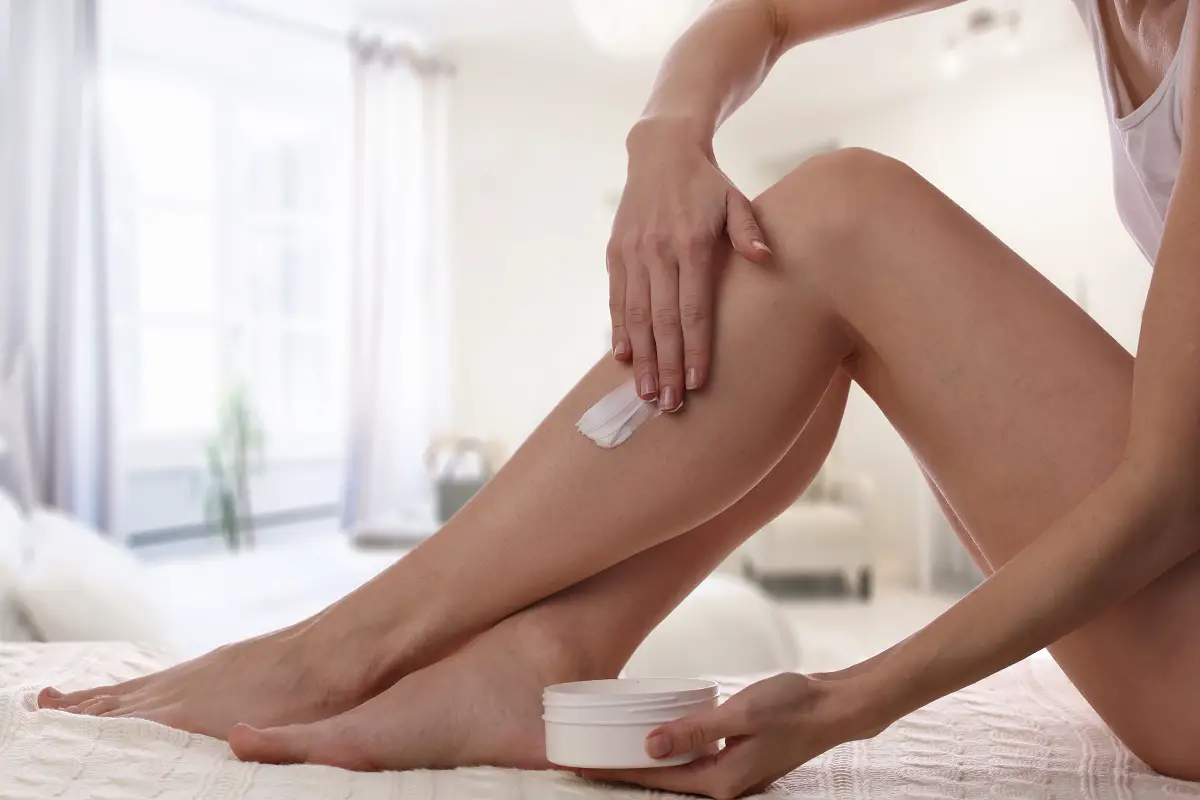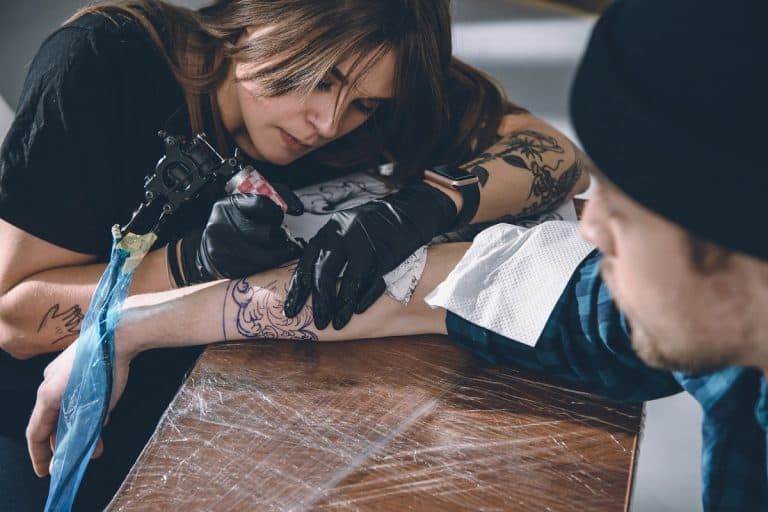Do Tattoo Removal Creams Work? Here’s Everything You Need To Know
There is nothing worse than getting a tattoo that you regret later. That lower back tattoo, or the tribal bicep one you got thinking they’d look cool; yeah, they don’t, and since you’re reading this, you’re probably aware of that.
So, what do people do when they want to get rid of a tattoo? They search for the best, most efficient, least expensive tattoo removal options. And here we are; tattoo creams seem to be the no.1 option for the majority of people. And why wouldn’t they be; imagine just rubbing cream onto the tattoo and it just magically disappears. That’s some stuff from the Harry Potter saga.
Now, let’s get serious. Tattoo removal creams are a thing, there’s no doubt. But, we couldn’t help but wonder whether these creams work. They just seem too good to be true, so we had to check this out. So, if you’re wondering the same, then hop on board, and let’s get right into this!
Your Guide To Tattoo Removal Creams
What Are Tattoo Removal Creams?
As the name is pretty straightforward and self-explanatory, a tattoo removal cream is a topical product claimed to fade or diminish the appearance of a tattoo. The majority of tattoo removal cream products claim to somehow bleach the epidermis or the top layer of the skin, or peel this layer away, and release the tattoo ink or pigment. Now, this sounds pretty invasive; almost like surgery. So, why would anyone go for a cream that works by ‘bleaching’ or ‘peeling your skin away’?
How Do Tattoo Removal Creams ‘Work’?
Well, tattoo removal creams contain peeling agents (like trichloroacetic acid, or TCA), or glycolic acid to ‘bleach’ or ‘peel away’ the surface skin layer. However, these creams claim to be able to penetrate the skin as well, and potentially remove the pigment from where the ink is placed, which is the dermis layer of the skin. The dermis is the inner skin layer where the ink is placed permanently.
Now, it is important to mention that these creams don’t reveal how much of TCA is inside. TCA in these creams is not regulated, and such acid is generally only used by medical professionals, in regulated amounts.
Now, we also have to say that no cream in this world can penetrate the skin this deep and reach the dermis layer of the skin. Creams generally stay on the surface. In the case of lotions and moisturizers, the epidermis simply soaks them in to stay hydrated. Other than this, no cream can penetrate the skin nor can it remove anything from within the skin as well.
Why Do These Creams Fail In Tattoo Removal?
So, to finally address the title of this article; tattoo removal creams DO NOT work! As we mentioned before, no cream can penetrate the dermis of the skin and just make the ink magically disappear; life is no Harry Potter movie. Now, these creams fail to work for many reasons;
- They simply stay on the skin surface, just like any other cream or ointment (the creams only penetrate the epidermis or the surface layer of the skin)
- It is impossible to apply the cream onto the tattoo directly since the ink is placed in the dermis of the skin, not the epidermis
- They contain questionable ingredients, like the TCA, glycolic acid, or hydroquinone
Now, these creams fail to remove tattoos, as expected. But, there is something in which these creams almost always succeed; causing harm to the skin. Let’s talk more about this in the following paragraphs!
Do Tattoo Removal Creams Cause Side Effects?
Yes; tattoo removal creams will cause some kind of skin damage in almost every case of application. These creams are not regulated, nor FDA-approved, so the ingredients and their amounts in the creams are highly questionable, and often dangerous. Now, what kind of side effects are we talking about here? Well, tattoo removal creams can cause;
- Skin pigmentation issues – these creams (especially the ones containing hydroquinone) act as skin lighteners. Upon application, they can cause skin discoloration and permanent lightening of the skin. You should stay away from these creams, especially if you’re of a darker complexion.
- Skin damage – because of the ‘peeling’ and ‘bleach’ effects, tattoo removal creams can cause serious skin damage, including permanent scarring, acid burns, skin inflammation, redness, and rashing. Of course, there can also occur skin peeling, which is incredibly painful.
- Allergic reactions and other life-threatening side effects – tattoo removal creams, because o the questionable ingredients, can trigger serious and life-threatening allergic reactions. The symptoms of such reactions include; rashing, swelling of the tattooed area, hives, breathing issues, nausea, and vomiting, as well as anaphylaxis.
So, Are There Other Tattoo Removal Options?
Tattoo removal, of any kind, is expensive and takes time to show results. So, when people opt for these kinds of tattoo removal creams, we understand it. Everybody tries to save money, but also achieve the best results.
However, when you get a tattoo, you should already know that removing it might cost you even more than what you had to pay for the tattoo in the first place. This is simply common knowledge; tattoos are incredibly hard to remove, and when they do get removed, it will cost you a fortune.
So, why is tattoo removal expensive? Well, mostly because of the safety concerns as well as the efficiency of the removal procedures. Let’s talk about other tattoo removal options for a better understanding (some of them are safe, and some are not);
- Laser Tattoo Removal
Laser tattoo removal is the best and safest removal option. It is done using either Q-switched or Picosecond lasers, which are designs to send pulses of concentrated heat that heats the ink in the skin and breaks it up into smaller cells.
Now, the rest of the process depends on your immune system and response. For example, when the ink is broken down into smaller cells, white blood cells in your body, called macrophages, target these ink cells and clear them out of your body. As a result, over several sessions, the laser manages to fade out the tattoo almost completely.
Laser tattoo removal can be pretty painful, and in some cases even cause skin scarring. However, this only happens in the case of untrained people performing laser removal. When done by a professional, who uses high-end equipment, you should expect a smooth and seamless process.
So, how many sessions will you need to get rid of a tattoo? Well, it depends; regular, black & grey tattoos, can be gone in between 8 and 12 sessions. However, colored tattoos (especially the ones with lighter ink shades) can take up to 20 sessions. So, considering that one session can cost between $200 to $500, we can conclude this by saying that laser tattoo removal gets expensive pretty quickly.
- Surgical Tattoo Removal
Also known as surgical excision, surgical tattoo removal means that your tattoo is being cut out surgically. The procedure comprises the tattooed skin being cut out and the rest being stitched together. Of course, this procedure will result in surgical scarring. Now, because of the invasiveness of the procedure, it is recommended only to be done with smaller tattoos and specific tattoo placements.
- Dermabrasion
Dermabrasion is a procedure performed using a sanding device, like an abrasive brush to scrape the tattooed skin. Even though it sounds almost perfect, this tattoo removal is not recommended for several reasons. First of all, it is extremely invasive and painful. Sure, your skin is numbed beforehand with local anesthesia, but after the anesthesia stops working, you’ll be in a lot of pain.
Furthermore, the skin after the treatment is completely raw, and it will stay so for a week at least. In that period, you will have to do all in your power to prevent and avoid infection or scarring of the skin. And finally, there is no guarantee that the procedure will remove the ink. This procedure is generally inefficient and you will also, most certainly, end up with a large scar in the place of a tattoo.
- Chemical TCA Peels
Chemical peels are generally done by a professional at a doctor’s office. They’re also done using the TCA (acid found in the tattoo removal creams we mentioned earlier), but in much higher amounts so that the acid can reach the dermis of the skin.
The peel is supposed to remove the epidermis and the dermis layers of the skin, and with them the ink as well. As you can expect, this procedure is painful and will create an open wound. So, proper aftercare is essential to avoid infection and skin damage. It is expected the wound to heal in 5 to 7 days. Of course, there is always the possibility of scarring, but if done properly, there should be no issues.
Chemical peels for tattoo removal are recommended only for smaller tattoos placed where the skin is thicker and there are fewer nerve endings.
Final Takeaway
So, to reiterate; tattoo removal creams do not work and they’re pretty much a scam product. So, to avoid skin damage or allergic reactions, stay away from creams and products claiming to be able to remove your tattoo. Instead, seek professional information about other tattoo removal options, like the ones we mentioned earlier.
There are a few ways you can get rid of unwanted ink; we surely think laser removal is the best and the safest option, but make sure to explore other options and see which suits you the best. Also, always make sure to get procedures done by experienced professionals in the doctor’s office.
- Safe, non-toxic plant-based temporary tattoos made with 100% high-definition printing for a realistic look without the pain
- Easy to apply and remove - just stick for 20 seconds then take off
- Set includes 5 sheets with 17 fun, delicate designs like hearts, cats, smiles, suns, moons, and more
- Waterproof and long-lasting - stays on up to 2 weeks of wear
- Fashionable for women, men, girls and boys
- Place on arm, wrist, neck, leg, finger, waist, foot and more
- Great for parties, birthdays, and showing your unique style









